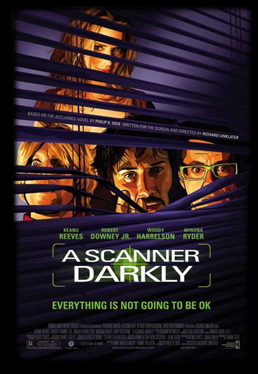
Scanner Darkly (the movie) directed by the brilliant Richard Linklater came out in July 2006.;The;movie has so many things;to talk about including the war on drugs (and why it cannot be won), PKD’s own creativity being fuelled by his substance abuse, how scramble suits could be the way to end racism etc.
Instead, I’ve decided to pick form over substance and talk about the animation instead because of two stats:
- it took 18 months to animate the movie in 2006
- with Convolutional Neural Networks it might just take a day to do that by the end of 2016;(I exaggerate highly, but read on)
Back in 2006, I was amazed by the animation technique so I tried to read up on;Interpolated Rotoscoping which was the technique used to create the movie. I didn’t get very far but here is a nice 4 min video about it;and some quotes from in there:
we shot the actual film;and we locked … and then there was a lengthy post-production process in this case was 18 months
the animation process which is so cumulative and so slow - hundreds of hours to do 1 minute
we thought it would take 350 man hours per minute, we were pretty off on that it took a lot longer
https://www.youtube.com/watch?v=eke5VnpNcNk
Fast forward to 2015-16 we have
-
CNN;and this paper
-
This Torch implementation;on github
-
Ostagram becoming a big thing overnight
They;also have plans for video, with;Moiseenkov saying their processing;technique can;still work quickly enough for a mobile video scenario.
“Photos is only the start. We plan to add something like the Boomerang app from Instagram. Like short cycles. We plan to add them in the near future — I think in July. And some sort of very clever filters where the quality will be superb,” he adds.
So potentially by the end of 2016 that 18 months of work and ~100,000 man-hours of effort could effectively become a day or less of work for a powerful;CNN - I’ll stop there and leave you to think about that.